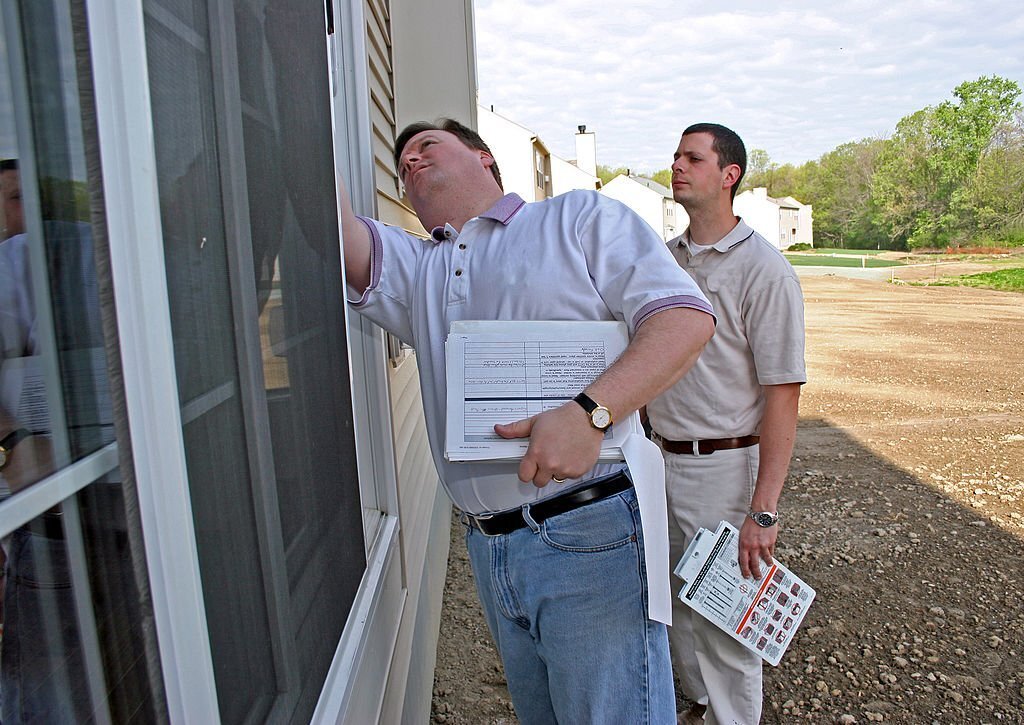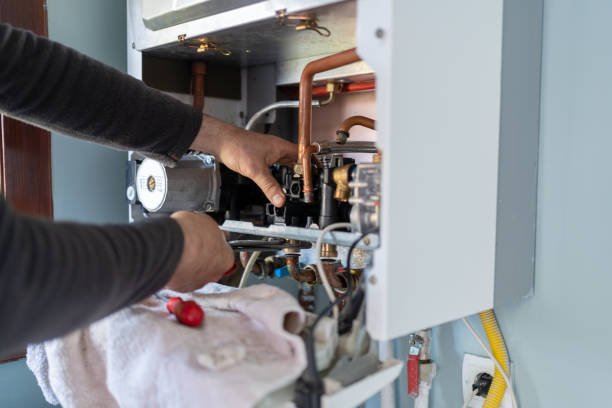Hey there, fellow homeowners and soon-to-be property owners! If you’re reading this, you’re likely curious about those pesky little wood-munchers we call termites. Whether you’re a longtime Dallas resident or new to the Lone Star State, understanding the importance of a termite inspection in Dallas is crucial. These tiny critters might not look like much, but they can cause big problems for your home and wallet if left unchecked.
In this guide, we will dive deep into the world of termite inspections. We’ll explore why they’re so important, what happens during an inspection, and how they can save you from costly damage down the road. So, grab a cup of coffee (or a nice cold sweet tea – we are talking about Texas, after all), and let’s get started!
Why Termite Inspections Matter
Before we get into the nitty-gritty of termite inspections, let’s talk about why they’re so darn important in the first place.
The Silent Destroyers
Termites are often called “silent destroyers,” and for good reason. These little bugs can munch away at the wood in your home for years before you even notice they’re there. By the time you see visible signs of damage, it might already be extensive – and expensive to repair.
The Cost of Ignorance
Here’s a scary statistic for you: termites cause billions of dollars in damage to homes in the United States every year. That’s a billion with a ‘B’! And what’s worse? Most homeowners insurance policies don’t cover termite damage because it’s considered preventable with proper maintenance.
Prevention is Key
The good news is that regular termite inspections can catch infestations early before they have a chance to do significant damage. It’s like going to the dentist – a little prevention can save you a lot of pain (and money) down the road.
Signs of Termite Infestation
Now that we know why termite inspections are important, let’s talk about some signs that you might have uninvited guests in your home.
Visible Termites
This one might seem obvious, but if you see actual termites, that’s a pretty clear sign you’ve got a problem. Termites look a bit like white ants, and you might see them in damaged wood or around your foundation.
Mud Tubes
Subterranean termites (the most common type in Dallas) build mud tubes to travel between their colony and their food source (your house). These tubes look like thin, brown lines running up your foundation or along wooden surfaces.
Damaged Wood
Wood that’s been infested by termites might sound hollow when tapped. You might also notice that paint or wallpaper is bubbling or peeling, which can be a sign of moisture from termite activity.
Frass (Termite Droppings)
Drywood termites leave behind small, wood-colored pellets called frass. If you see what looks like tiny piles of sawdust around your home, it could be frass.
Discarded Wings
During certain times of the year, termites swarm to start new colonies. After they land, they shed their wings. Finding piles of discarded wings around your home can be a sign of a new infestation.
What Happens During a Termite Inspection?
Alright, so you’ve decided to be proactive and schedule a termite inspection. Good for you! But what exactly happens during one of these inspections? Let’s break it down.
1. Exterior Inspection
The inspector will start by examining the outside of your home. They’ll look for:
- Signs of mud tubes along the foundation
- Wood in contact with soil (which can provide easy access for termites)
- Areas of high moisture (termites love damp environments)
- Cracks or gaps in the foundation
- Evidence of termite swarmers or discarded wings
2. Interior Inspection
Next, they’ll move inside. Here’s what they’ll be checking:
- Wooden structures like door frames, window sills, and baseboards
- Areas prone to moisture, like bathrooms and kitchens
- The attic and crawl spaces
- Any visible wood beams or supports
3. Sounding Test
The inspector might tap on wooden surfaces to listen for a hollow sound, which can indicate termite damage.
4. Moisture Meter
Some inspectors use a moisture meter to check for unusually high moisture levels in wood, which can indicate termite activity.
5. Probing
The inspector might use a small tool to probe wood surfaces, checking for soft spots that could indicate damage.
6. Documentation
Throughout the inspection, the inspector will document their findings, often taking photos of any evidence they find.
Types of Termite Inspections
Not all termite inspections are created equal. Here are a few different types you might encounter:
Visual Inspection
This is the most common type of inspection, where the inspector visually examines your home for signs of termites or damage.
Wood-Destroying Insect Report (WDIR)
This is a more formal inspection often required during real estate transactions. It covers not just termites, but other wood-destroying insects as well.
Thermal Imaging Inspection
Some inspectors use infrared cameras to detect temperature differences that might indicate termite activity.
Acoustic Detection
This high-tech method uses devices that can detect the sound of termites in your walls.
After the Inspection: Understanding the Results
Once the inspection is complete, you’ll receive a report detailing the findings. Here’s what you might see:
No Evidence of Termites
Great news! If the inspector doesn’t find any signs of termites or damage, you’re in the clear – for now. Remember, regular inspections are still important to catch any future problems early.
Evidence of Past Infestation
Sometimes, inspectors find signs of old termite damage or activity. This doesn’t necessarily mean you have an active infestation, but it’s something to keep an eye on.
Active Infestation
If the inspector finds live termites or signs of current activity, you’ll need to take action. The report should include treatment recommendations.
Conducive Conditions
Even if there’s no current infestation, the inspector might identify conditions that make your home attractive to termites. This could include things like wood-to-ground contact or excess moisture.
What to Do If Termites Are Found
So, the inspection turned up some unwanted guests. Don’t panic! Here’s what you should do:
1. Review Treatment Options
There are several ways to treat termite infestations, including:
- Liquid treatments
- Bait systems
- Fumigation (for severe infestations)
Your inspector should be able to recommend the best option for your situation.
2. Get Multiple Quotes
It’s a good idea to get quotes from several pest control companies before deciding on treatment. Make sure they’re licensed and insured.
3. Consider Prevention
Once you’ve dealt with the current infestation, think about ways to prevent future problems. This might include:
- Removing wood-to-ground contact
- Fixing leaky pipes or poor drainage
- Using termite-resistant materials in future renovations
4. Schedule Regular Inspections
Even after treatment, it’s important to have regular inspections to catch any new activity early.
The Cost of Termite Inspections vs. The Cost of Damage
Let’s talk money for a minute. You might be thinking, “Do I need to spend money on termite inspections?” Well, let’s break down the costs:
Cost of Inspection
A typical termite inspection might cost anywhere from $75 to $300, depending on the size of your home and the type of inspection.
Cost of Treatment
If termites are found, treatment can range from $500 to $2,500 or more, depending on the severity of the infestation and the method used.
Cost of Damage
Now, here’s the kicker – the average cost to repair termite damage is around $3,000. But it can go much higher. In severe cases, repairs can cost tens of thousands of dollars.
When you look at it that way, the cost of regular inspections is a small price to pay for peace of mind and potential savings.
DIY Termite Prevention
While professional inspections are crucial, there are also steps you can take to make your home less attractive to termites:
- Reduce moisture: Fix leaky pipes, improve drainage, and use dehumidifiers in damp areas.
- Remove food sources: Keep firewood and lumber away from your home’s foundation.
- Seal entry points: Caulk cracks and crevices in your home’s foundation.
- Maintain your yard: Keep mulch away from your foundation and remove dead trees or stumps.
- Use termite-resistant materials: When renovating, consider using treated wood or non-wood materials.
When to Schedule a Termite Inspection
So, when should you be picking up the phone to schedule an inspection? Here are some key times:
- Annually: Even if you don’t suspect a problem, yearly inspections can catch issues early.
- When buying a home: Always get a termite inspection before purchasing a property.
- After treatment: If you’ve had termites before, regular follow-up inspections are crucial.
- If you spot signs: If you notice any of the signs we discussed earlier, don’t wait – get an inspection ASAP.
- Before renovations: If you’re planning major renovations, it’s a good idea to check for termites first.
The Bottom Line
Whew! We’ve covered a lot of ground, haven’t we? Let’s recap the key points:
- Termites can cause serious, expensive damage to your home.
- Regular inspections can catch infestations early, saving you money in the long run.
- There are several signs of termite activity you can watch out for.
- Professional inspections are thorough and can detect problems you might miss.
- If termites are found, there are effective treatment options available.
- The cost of inspections and prevention is far less than the potential cost of repairs.
Remember, your home is likely the biggest investment you’ll ever make. Protecting it from termites is an important part of maintaining that investment. By staying vigilant and scheduling regular inspections, you can save yourself from the headache (and wallet-ache) of major termite damage.
So, whether you’re in a historic home in Oak Cliff or a new build in Frisco, don’t let termites take a bite out of your piece of the American dream. Stay informed, stay proactive, and keep those little wood-munchers at bay!



